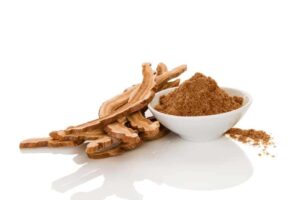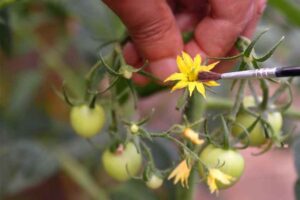
Strawberry plants are a popular choice among home gardeners for their delicious fruits and easy maintenance.
Although they can sometimes fall into a slump, and if you’ve noticed your strawberry plants looking a little under the weather, you’re probably wondering “How to revive strawberry plants?”
However, strawberry plants can die or wilt due to various factors including improper watering (both overwatering and underwatering), diseases like verticillium wilt or fungal infections, infestations by pests like slugs or spider mites, poor soil conditions including nutrient deficiencies or imbalances, and environmental factors like excessive heat or cold.
This comprehensive guide will provide you with practical strategies and effective techniques to bring your ailing strawberry plants back to health. You’ll learn about common strawberry plant problems, their causes, and how to fix them.
Whether your strawberries are suffering from environmental stress, pest issues, or disease, we’ve got you covered. Harness the full potential of your garden by following these easy steps to rejuvenate your strawberry plants, and get ready to enjoy a bountiful harvest in no time.
Identifying Symptoms of Ailing Strawberry Plants
1. Identifying Common Diseases and Pests
Is your strawberry plant wilting, showing spots, or infested with insects? Identifying common diseases and pests is the first step towards reviving your strawberry plants. Diseases like verticillium wilt or anthracnose can lead to significant damage if not promptly treated. Pests, like slugs or aphids, can also harm your plant’s overall health.
2. Diagnosing Nutrient Deficiency
Strawberry plants need a balanced diet of essential nutrients for proper growth. When they lack certain elements, symptoms such as yellowing leaves, stunted growth, or poor fruit production may appear. Knowing the signs of nutrient deficiency is crucial in addressing the issue and reviving your plant.
The Ideal Strawberry Plant Environment
Soil Requirements
Just like any other plant, strawberries need a specific type of soil to flourish. They prefer well-drained, slightly acidic soil, rich in organic matter. If your strawberry plant isn’t thriving, it might be due to unsuitable soil conditions.
Light Requirements
Strawberries love sunlight. They require at least six hours of direct sunlight each day for optimal fruit production. If your plant isn’t receiving enough light, its growth may be stunted, and its yield may be reduced.
Temperature and Humidity
Ideal temperatures for strawberry plants lie between 60-80°F. If temperatures go beyond this range, it could lead to plant stress. Similarly, too much humidity can facilitate the spread of fungal diseases. Maintaining an appropriate temperature and humidity balance is key to a healthy strawberry plant.
Proper Care Techniques for Strawberry Plants
1. Watering Practices
Regular watering is essential for strawberries, but overwatering can lead to root rot. A good practice is to keep the soil moist but not waterlogged. If your plant’s leaves are wilting or turning brown, you might be over or under-watering.
2. Fertilization Guide
A balanced fertilizer, rich in nitrogen, phosphorus, and potassium, is ideal for strawberries. However, over-fertilizing can burn your plant’s roots and cause more harm than good.
3. Pruning and Mulching
Pruning can help your strawberry plant by removing diseased or dead parts, allowing more energy for healthy growth. Mulching, on the other hand, helps retain moisture, suppress weeds, and regulate soil temperature.
The Rescue Act: Reviving Strawberry Plants
Steps on How to Revive Strawberry Plants
Now that we’ve discussed the possible problems and their causes let’s dive into the steps of How To Revive Strawberry Plants. This section includes methods like replanting, treating diseases, and controlling pests.
Post-revival care
After successfully reviving your strawberry plants, ongoing care is crucial to prevent a relapse. This involves consistent monitoring of the plant’s health and conditions, regular watering, appropriate fertilization, and necessary adjustments to its environment.
Preventing Future Health Issues in Strawberry Plants
Effective Pest Control Measures
Preventing pests is easier than getting rid of them. Here, we’ll discuss various pest control measures, from organic methods to the use of chemical pesticides.
Disease Prevention
Diseases can be a major threat to your strawberry plants. Learn how to prevent common diseases from affecting your plant in the future.
Avoiding Nutrient Deficiency
Balancing the nutrient intake of your plants is a fine art. Find out how to avoid nutrient deficiency and maintain the overall health of your strawberry plants.
FAQs on How to Revive Strawberry Plants
Why are my strawberry plants wilting?
Answer: Wilting can be a sign of various issues, such as over or under-watering, disease, or a pest infestation.
How often should I water my strawberry plants?
Answer: Keep the soil consistently moist but avoid waterlogging.
How can I treat common strawberry plant diseases?
Answer: Treatment depends on the disease. However, most treatments involve removing affected parts and applying an appropriate fungicide or pesticide.
How can I prevent pests from attacking my strawberry plants?
Answer: Use organic methods such as intercropping or introduce natural predators. In severe cases, chemical pesticides might be necessary.
Why are my strawberry plants not producing fruit?
Answer: It could be due to inadequate sunlight, nutrient deficiency, disease, or pest infestation.
How long does it take to revive a strawberry plant?
Answer: Depending on the severity of the issue, it can take anywhere from a few weeks to a few months to revive a strawberry plant.
Conclusion
Overall, understanding the requirements and potential threats to your strawberry plants are key to reviving them. With the right knowledge and care, you can nurse your strawberry plants back to health and enjoy a bountiful harvest.







